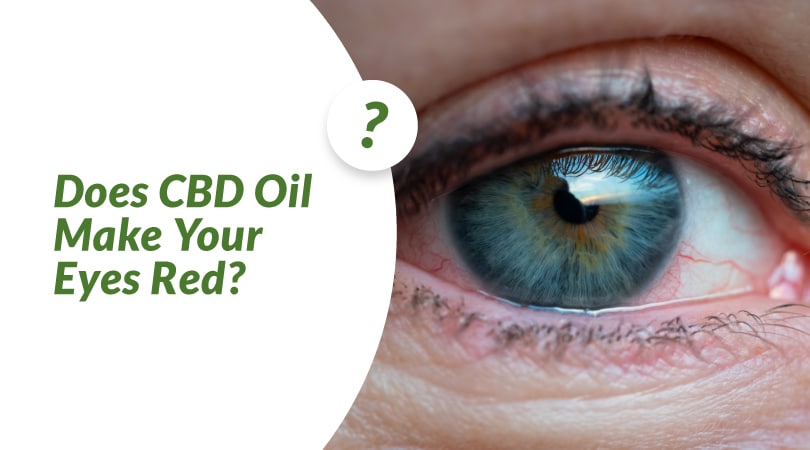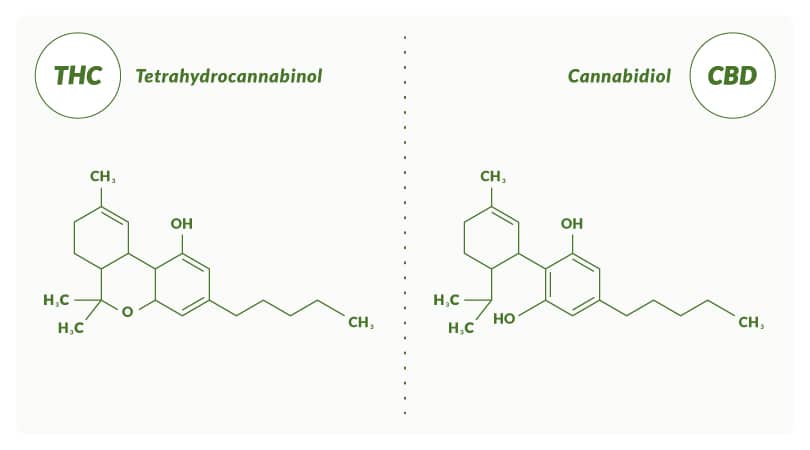
Does CBD Oil Make Your Eyes Red?
It’s no news that the therapeutic properties of cannabis-derived products have gained the attention of many people around the world. As opposed to harsh medications and surface level treatment plans that are occasionally associated with the pharmaceutical industry, CBD offers a natural alternative that works to solve the underlying problem. While many people are turning to CBD to improve their overall wellness, there are still many misconceptions and confusion about CBD-derived products.
Seeing that CBD derives from the same plant as marijuana, many people question the similarity and differences between CBD and marijuana, especially in terms of effects. Although the body reacts with CBD and THC differently, users should be aware of every aspect of the product. One of the recurring questions that consumers have is whether CBD makes your eyes red.
Does CBD Oil Make Your Eyes Red?
Contrary to popular belief, CBD does not make your eyes red. This side effect is connected to THC, the main compound responsible for the effects of marijuana. Since CBD and THC derive from the same plant, it’s assumed that the body reacts to them in similar ways, which is not entirely accurate.
When THC is consumed, it causes the dilution and widening of capillaries in the eyes. This increases blood flow while also reducing intraocular pressure (the fluid pressure inside the eye). The combination of expanded capillaries and increased blood flow is what generates the red eyes that marijuana is so often associated with. CBD does not provoke this reaction, which is a relief to many CBD consumers.
Although THC is connected to red, watery eyes, that doesn’t mean it’s not a beneficial compound. Small traces of THC can be a great addition to CBD, which is demonstrated in full-spectrum CBD products. Understanding the difference between CBD and THC helps consumers uncover which cannabis-derived products are right for them.
CBD vs. THC
CBD and THC have the same chemical composition, which consists of 30 hydrogen atoms, 21 carbon atoms, and 2 oxygen atoms. However, they differ in how their atoms are arranged; this causes each compound to produce different effects on the body.

CBD
The biggest difference between CBD and THC is that CBD is a non-intoxicating compound. Its lack of psychoactive properties means that it doesn’t cause the high associated with THC. To understand how CBD works, we have to acknowledge how it affects the endocannabinoid system (ECS). This system is in charge of balancing and regulating bodily functions. When consumed, CBD interacts with the receptors in the ECS and helps maintain homeostasis throughout the body. You can read more about this in our previous article.
CBD is usually associated with health, medical, and wellness benefits because of its anti-inflammatory, antioxidant, and neuroprotective effects. It is often consumed for pain management, stress and anxiety relief, sleep management, and improved relaxation. Research has allowed us to learn more about the benefits of CBD, and we will continue to discover new ways that CBD can be used as a natural alternative.
THC
THC is often linked to recreational use due to its intoxicating properties, but it also has many therapeutic effects. Similar to CBD, THC interacts with cannabinoid receptors, resulting in the release of neurotransmitters. This release includes large amounts of dopamine, giving the consumer the high that is associated with THC.
THC also sends signals to the brain by binding to cannabinoid receptors. This interaction encourages relaxation, elevated mood, and an altered perception of time. Its antioxidant, anti-inflammatory, and antibacterial properties offer additional potential benefits, including pain relief, stress relief, appetite enhancer, and other possible uses in the world of medicine.
The downside of THC is that it can potentially cause negative side effects when consumed in large amounts or by users who are sensitive to its effects. Despite the fact that THC is used to treat some of these effects, it can occasionally cause the opposite response, such as anxiety, nausea, paranoia, red eyes, and difficulty sleeping. To avoid this reaction, full-spectrum CBD products are a great alternative.
Full-Spectrum CBD Products
Full-spectrum CBD products combine the benefits of both THC and CBD, as well as other cannabinoids, terpenes, and flavonoids. They contain all of the naturally occurring compounds in the cannabis plant, including trace amounts of THC. Legally, the concentration of THC should be no more than 0.3%, meaning full-spectrum CBD products should not have the same negative side effects that THC sometimes provokes. The small percentage of THC implies that full-spectrum products should not cause red and watery eyes, although it’s possible. This is especially true if the product isn’t well regulated and has more THC than the law allows.
To avoid this, users should purchase high-quality products that have been tested by a third party, as we do at Vitality. This ensures that the ingredients and potency levels are accurate and offer maximum results.
Final Thoughts
CBD does not make your eyes red but THC does. Although full-spectrum CBD products contain THC, the amounts are low and therefore unlikely to cause red eyes. To ensure you are getting full-spectrum products that are high quality and well regulated, read the labels carefully and make sure that the products are tested by a third party lab.
